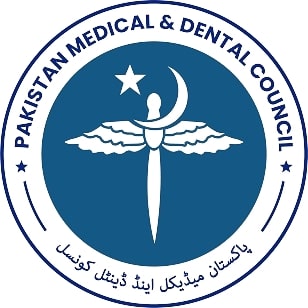REASONS OF DONOR DEFERRAL FOR A SINGLE DONOR PLATELETPHERESIS IN A PUBLIC SECTOR BLOOD TRANSFUSION CENTRE OF LAHORE: A CROSS-SECTIONAL STUDY
DOI:
https://doi.org/10.59058/jaimc.v20i3.40Keywords:
Donor deferral, blood transfusion, donor deferral, plateletpheresis, blood donor, donor exclusion, donor screeningAbstract
Background and Objective: Plateletpheresis is a process by which platelets are extracted from the donor. Donor selection is critical since donors are the sole supply of blood available to satisfy demand. The goal of this study is to investigate the causes behind plateletpheresis donor deferral in order to ensure safe blood donation.
Materials and Methods: The research was carried out at the department of Haematology and Transfusion Medicine University of Child Health Sciences, The Children Hospital Lahore. 50 plateletpheresis donors who voluntarily came for donation were considered for the procedure as per guidelines and departmental standard operating procedure. The details of the procedure of plateletpheresis were explained to each donor. Donor questionnaire was filled including brief history, general physical examination, Haematological parameters such as haemoglobin and the donor blood screening was done to be considered fit for procedure. The reasons for deferral of donors were noted after all work up was done. Informed consent was taken before the procedure. Plateletpheresis was done using COM.TEC Cell Separator instrument.
Results: In this study 50 donors were included. Out of 50 donors 34 were approved for procedure and 16 were deferred due to different temporary and permanent reasons. The age of the donors were in between 18 to 50 years. Major reason for temporary deferral was poor venous access (n=7, 14%) followed by the low haemoglobin value (n=4, 8%). Other reasons for temporary deferral were history of medication (n=3, 6%), low platelet count (n=4,8%), history of blood transfusion (n=1, 2%), history of vaccination n=2, 4%), leucocytosis (n=1, 2%), underweight (n=4, 8%), fever (n=1, 2%), refusal after questionnaire (n=1, 2%), seropositive for malaria and VDRL (n=3, 6%), high blood pressure (n=1, 2%), and anxiety (n=1, 2%). Permanent reasons for deferral were seropositive for HbsAg (n=2, 4%), seropositive for HCV (n=4, 8%) and tattoo (n=1, 2%).
Conclusion: This study found a pattern of donor deferral in single donor platelet apheresis that was our experience in single centre. In conclusion during the selection of donors, Transfusion services should be very careful related to donor safety measures and these causes of deferral should be kept in mind.
References
REFERENCES
Browne, A. et al. (2020) ‘Donor Deferral Due to Low Hemoglobin—An Updated Systematic Review’, Transfusion Medicine Reviews, 34(1), pp. 10–22. doi: 10.1016/j.tmrv.2019.10.002.
Lokhandwala, P. M. et al. (2018) ‘Optimizing donor scheduling before recruitment: An effective approach to increasing apheresis platelet collections’, PLoS ONE, 13(5), pp. 1–9. doi: 10.1371/journal.pone.0198062.
Khurram, S. et al. (2017) ‘Frequency and reasons of donor deferral prior to blood donation process: a single centre experience’, Transfusion Medicine, 27(1), pp. 10–15. doi: 10.1111/tme.12368.
Dogu, Mehmat H., and SibelHaciogu ’Analysis of plateletpheresis donor,deferral rate, characteristics and its preventability
J of Applied Haematology, 2017;8(1): 12-15.
Doi: 10.4103/joah_6_17.
Arora D, Garg K, Kaushik A, Sharma R, Rawat DS, Mandal AK. A Retrospective study of Apheresis Donor Deferral and Adverse Reactions at a Tertiary Care Centre in India. J Clin Diagn Res. 2016;10(11):EC22-EC24. doi:10.7860/JCDR/2016/20707.8925.
Amanat, S. T. et al. (2015) ‘Clinical indications and adverse reactions of platelet apheresis’, Journal of the College of Physicians and Surgeons Pakistan, 25(6), pp. 403–406.
Pujani, M. et al. (2014) ‘Donor deferral characteristics for plateletpheresis at a tertiary care center in India- a retrospective analysis’, Journal of Clinical and Diagnostic Research, 8(7), pp. 1–4. doi: 10.7860/JCDR/2014/8131.4563.
Tendulkar, A. and Rajadhyaksha, S. B. (2009) ‘Comparison of plateletpheresis on three continuous flow cell separators’, Asian Journal of Transfusion Science, 3(2), pp. 73–77. doi: 10.4103/0973-6247.53877.
Agarwal, P. and Verma, A. (2009) ‘Automated platelet collection using the latest apheresis devices in an Indian setting’, Transfusion and Apheresis Science, 41(2), pp. 135–138.
doi: 10.1016/j.transci.2009.07.013.
Tondon, R., Pandey, P. and Chaudhry, R. (2008) ‘A 3-year analysis of plateletpheresis donor deferral pattern in a Tertiary Health Care Institute: Assessing the current donor selection criteria in Indian scenario’, Journal of Clinical Apheresis, 23(4), pp. 123–128. doi: 10.1002/jca.20171.
Rogers, R. L. et al. (1995) ‘Efficacy and safety of plateletpheresis by donors with low‐normal platelet counts’, Journal of Clinical Apheresis, 10(4), pp. 194–197. doi: 10.1002/jca.2920100407.
Downloads
Published
How to Cite
Issue
Section
License
Copyright (c) 2023 JAIMC

This work is licensed under a Creative Commons Attribution 4.0 International License.
The articles published in this journal come under creative commons licence Attribution 4.0 International (CC BY 4.0) which allows to copy and redistribute the material in any medium or format Adapt — remix, transform, and build upon the material for any purpose, even commercially under following terms.
-
Attribution — You must give appropriate credit, provide a link to the license, and indicate if changes were made. You may do so in any reasonable manner, but not in any way that suggests the licensor endorses you or your use.
- No additional restrictions — You may not apply legal terms or technological measures that legally restrict others from doing anything the license permits.
The editorial board of the Journal strives hard for the authenticity and accuracy of the material published in the Journal. However, findings and statements are views of the authors and do not necessarily represent views of the Editorial Board. Many software like (Google Maps, Google Earth, Biorender (free version)) restricts the free distribution of materials prepared using these softwares. Therefore, authors are strongly advised to check the license/copyright information of the software used to prepare maps/images. In case of publication of copyright material, the correction will be published in one of the subsequent issues of the Journal, and the authors will bear the printing cost.










